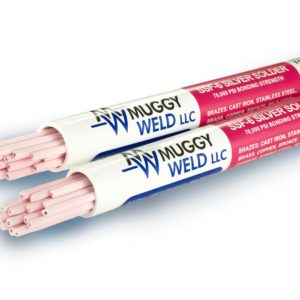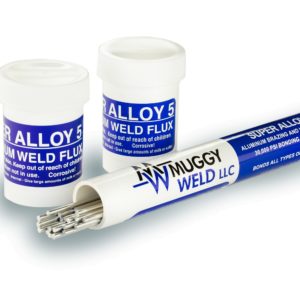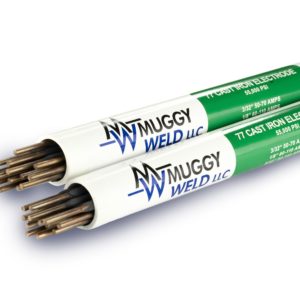In this video, we demonstrate welding cast iron parts with Muggy Weld 77 electrode and a 130 amp mini arc welder. A full sized arc welder is recommended with all our cast iron electrodes, however, we wanted to demonstrate how easily anyone can weld cast iron parts even with the most rudimentary machinery.
As you can see, the cast iron marine blower has a large cut in the cast iron. Before welding the parts, Mike used a propane torch to gently heat the cast iron. This step is not necessary when working with a full sized welder, however, taking the chill off the base cast iron will improve bonding when using a mini welder.
Metal preparation took only a few minutes: We used a grinding wheel to bevel halfway through, creating a “V” shaped bevel to anchor the filler rod.
After preparing the cast iron surface for welding, Mike applied the 77 cast iron rod, one pass at a time in one inch increments. He used a ball peen hammer to remove the slag, and a grinding wheel to smooth the surface.
2 minutes and 2 inches of 77 and the part was as good as new.
Note: Burnt cast iron can be effectively welded by first laying down a bead of 72, then following with 77 (this technique was not necessary for this cast iron welding application, as the cast iron parts were not heat affected)
TIPS:
- For best results clean and bevel the cast iron before welding.
- Gently pre-heat the cast iron if possible, no need to get it red hot but it will lay flatter when you first start your bead and preheating removes moisture out of the cast to prevent pinholes.
- For welders that use nickel, use the same process you would with nickel as the MuggyWeld 77 rod will produce a superior result.
Note: Please observe all AWS Safety & Health Guidelines when using Muggy Weld products.



